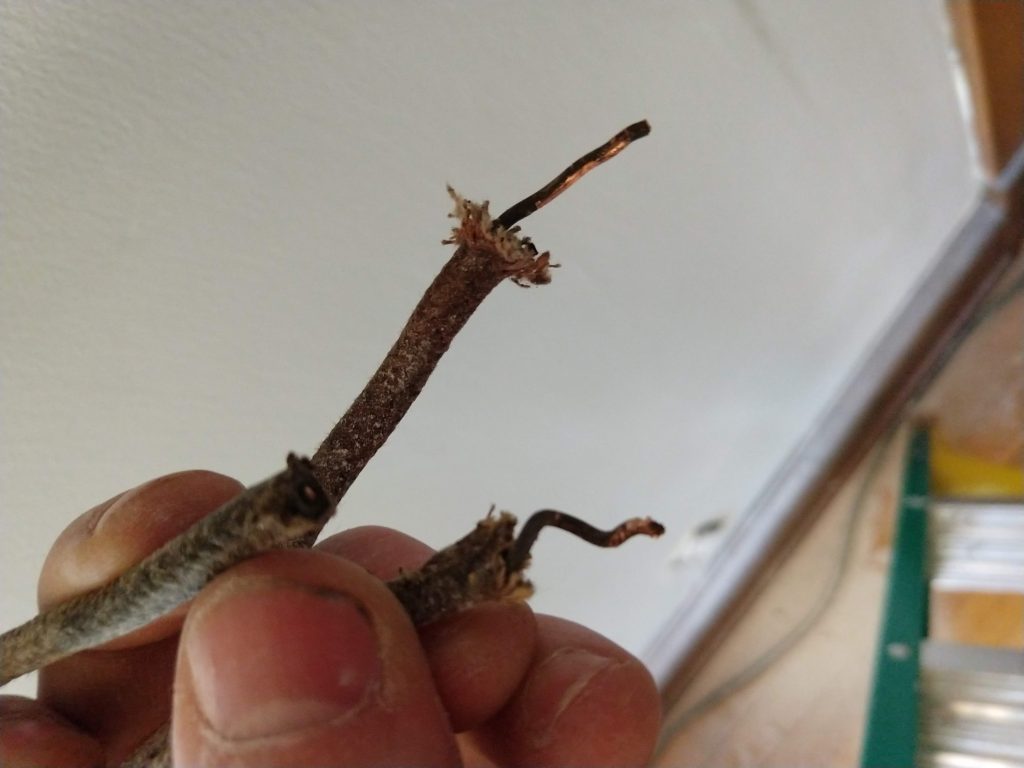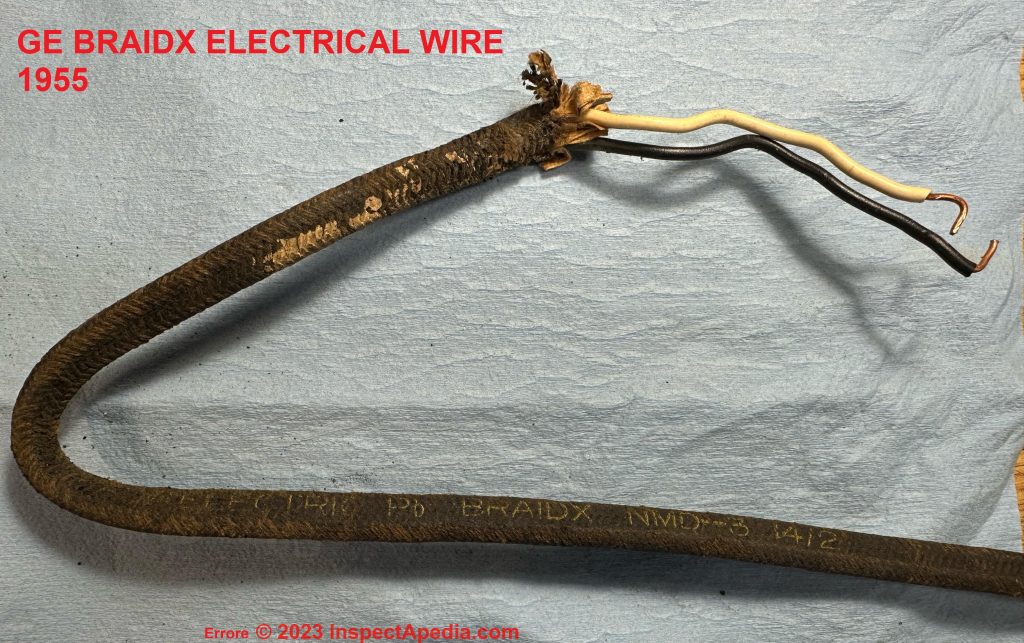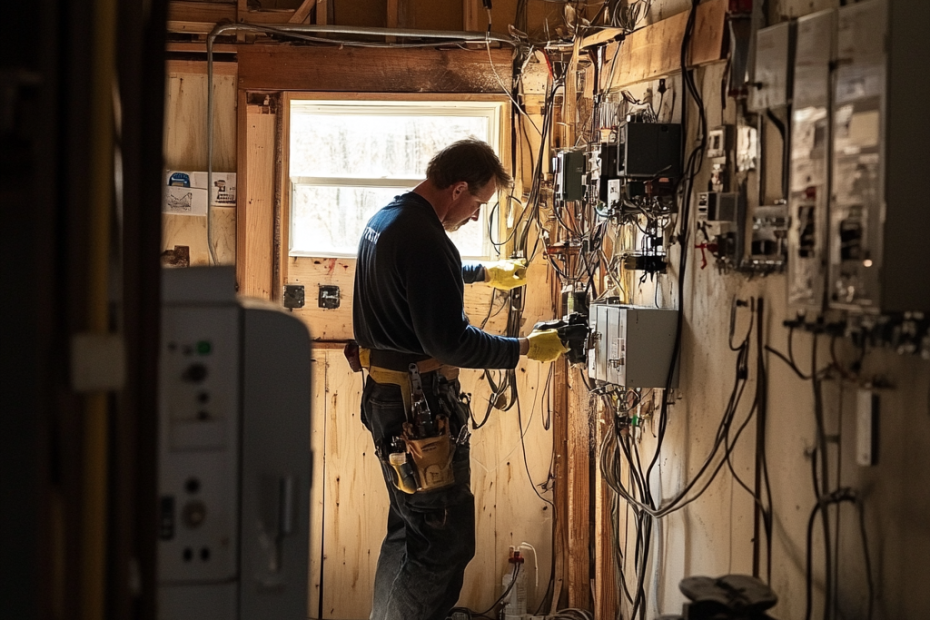Understanding Cloth Wiring: Educating Realtors and Homebuyers
When buying or selling a home, one common concern that often arises during inspections is the presence of “cloth wiring.” This term has become a blanket phrase in the real estate industry and is frequently misunderstood. For both realtors and homebuyers, it’s crucial to understand the difference between true cloth wiring and cloth wiring with thermoplastic or rubber insulation. This knowledge can help you navigate the inspection process with confidence and avoid unnecessary worries.
What is Cloth Wiring?
Cloth wiring refers to electrical wiring insulated with a fabric material, commonly used in homes built before the 1960s. It was widely installed before modern plastic or thermoplastic insulation became the standard. The main types of cloth wiring include:
- True Cloth Wiring
- This type of wiring is insulated entirely with cloth and may lack proper grounding.
- Over time, the cloth insulation deteriorates, becoming brittle or frayed, which can expose live wires and increase the risk of electrical hazards such as shorts or fires.
- True cloth wiring is considered outdated and unsafe by today’s standards.
- Cloth Wiring with Thermoplastic or Rubber Insulation
- In this case, the wires have a fabric outer sheath but are insulated with a more modern material like thermoplastic or rubber beneath the cloth layer.
- These wires are generally considered safer and are still functional in many older homes.


Why the Confusion?
Many home inspection schools and training programs group all types of cloth wiring together under a single umbrella, labeling them as potential safety concerns. While this approach simplifies the teaching process for inspectors-in-training, it doesn’t accurately reflect the nuances between the two types.
For instance, true cloth wiring should be flagged as a safety concern during a home inspection. However, cloth-covered wiring with thermoplastic or rubber insulation does not automatically pose a hazard. The latter is simply a reflection of the home’s age and doesn’t necessarily require immediate replacement.
Cloth Wiring and 4-Point Inspections
In Florida, 4-point inspections are often required for older homes when obtaining homeowner’s insurance. These inspections evaluate the roof, HVAC, plumbing, and electrical systems. Here’s the key point:
- True cloth wiring may be flagged as a safety issue on a 4-point inspection and could affect insurance eligibility.
- Cloth wiring with thermoplastic or rubber insulation is not considered reportable on a 4-point inspection because it doesn’t fall into the “unsafe” category.
Unfortunately, the lack of clarity on this topic has led to confusion among homeowners, buyers, and even some inspectors.
Educating Buyers and Realtors
As a realtor or buyer, it’s important to ask questions and understand the nuances of the home’s electrical system. Here are a few tips:
- Understand the Terminology
Ask your inspector to clarify what they mean when they report “cloth wiring.” Request specifics about the insulation material and whether the wiring is grounded. - Know When to Be Concerned
True cloth wiring warrants attention and possibly an electrician’s evaluation. However, if the wires have a thermoplastic or rubber core, there’s often no immediate cause for concern. Age, deterioration, or unsafe practices may warrant comment by a home inspector for evaluation and replacement. - Work with Knowledgeable Inspectors
Choose an inspector who is experienced and can provide a detailed explanation of the electrical system. An inspector who understands the difference can help avoid unnecessary alarm or complications in the transaction.
Final Thoughts
Electrical systems are an essential component of any home inspection. As a realtor or buyer, knowing the difference between true cloth wiring and cloth wiring with thermoplastic or rubber insulation can save you time, stress, and money. Not all cloth wiring is created equal, and understanding this distinction can prevent misunderstandings during the inspection process.
At Cooper Home Inspections, we pride ourselves on providing thorough and accurate evaluations. We aim to educate buyers and realtors so you can make informed decisions with confidence. If you have questions about cloth wiring or any other aspects of a home inspection, contact us today!

Pingback: New 4-Point Inspection Form Updates | 2025
Comments are closed.